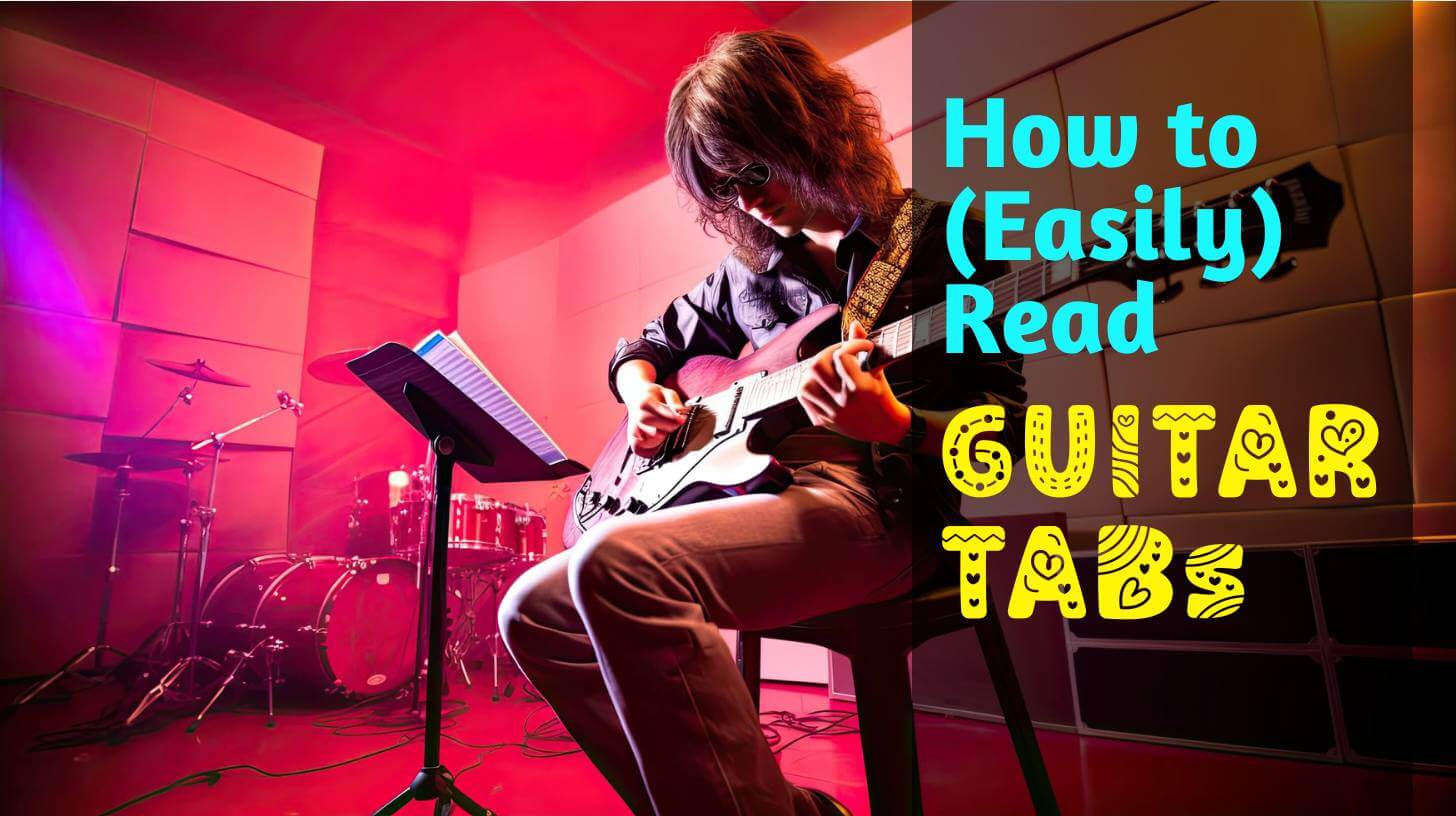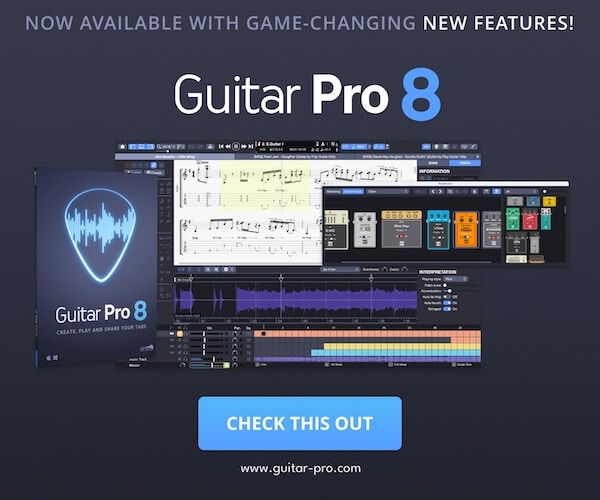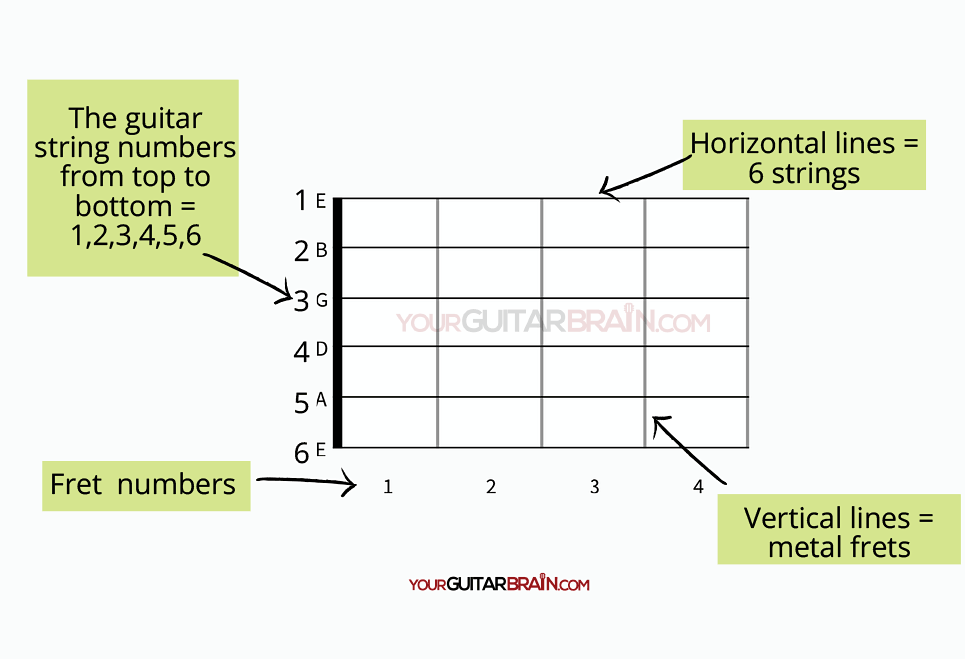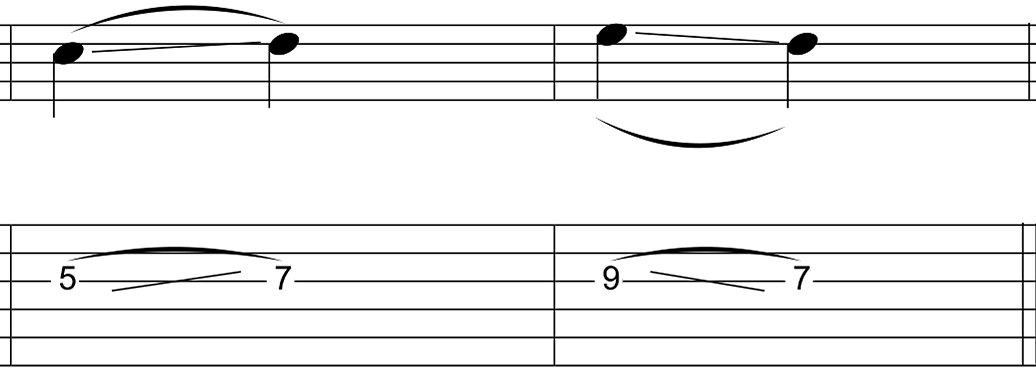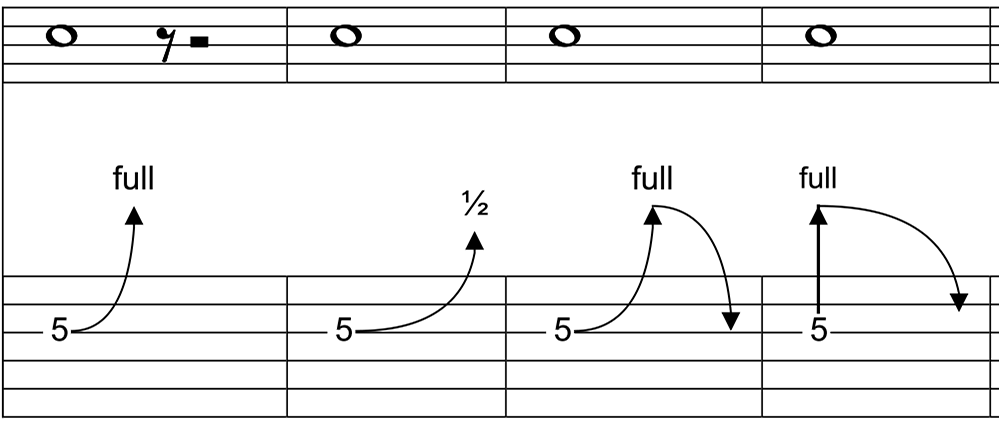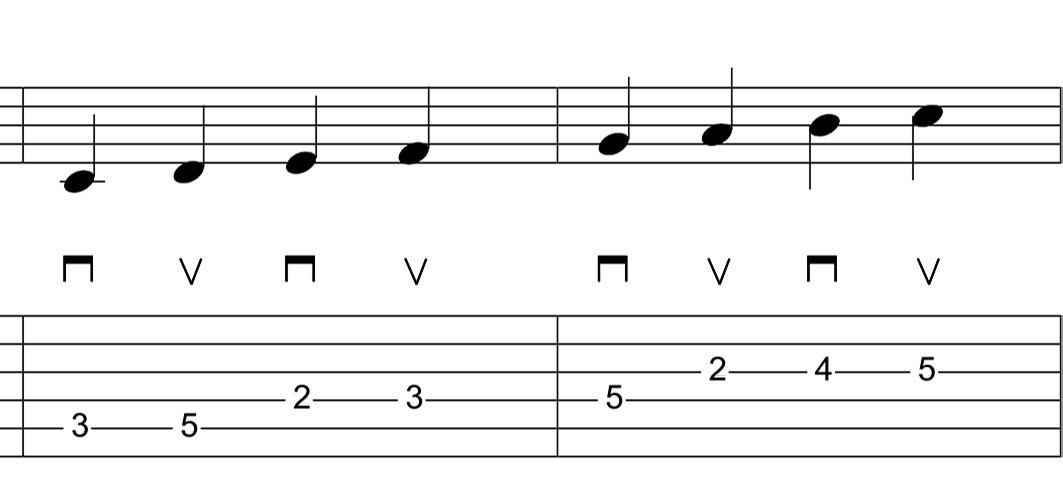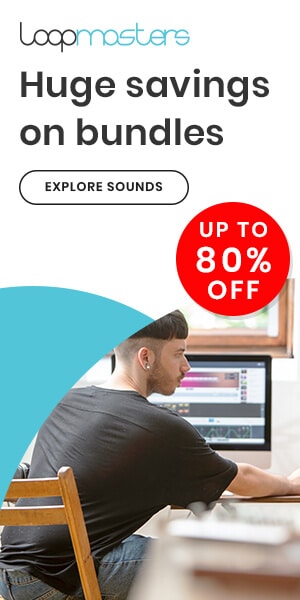Understand how to properly read guitar Tabs – the best music notation tool for guitar players who can’t read music.
- Learn what the symbols in guitar TABs mean - vibrato, pull-offs, hammer-ons, slides, bends and more.
- For quality PDF blank tab paper, blank chord sheets and printable music sheet mega bundles visit our shop here.
What Is Guitar Tablature?
Guitar tablature (aka – tab or TAB) is a unique way of writing out music specifically designed for guitar players.
It’s an easy way to write down single notes or chords and is a form of music notation that makes it quicker and easier for guitarists to learn how to play songs, riffs and solos.
Good to Know
Watch the video for a breakdown of how to read tablature for absolute beginner guitar players. Read through the post, and by the end of it, you'll understand how to quickly and easily read TAB on your own.
How Do You Read Guitar Tablature?
If you know how to guitar read guitar chord boxes and scale diagrams, just think of the basic guitar tablature grid (aka stave or staff) as being similar to a horizontal scale box.
Take a peep at the diagram below (Fig 1.0). The six horizontal lines represent your guitar strings, and the open string notes are laid out from the bottom (bass) strings to the top (treble) strings.
Pro Tip
Avoid a common beginner mistake: always remember the thickest low E string is at the bottom of the guitar tablature, and the high E string is located at the top, not the other way around.
Fig 1.0 – How to read guitar tablature: fretboard diagram showing what the lines mean, order of the guitar strings and fret numbers.
What Are The Different Types Of Guitar Tablature?
There are a few different types of tablature design you’ll see online and in books. With that being said, let’s now explore those main tab variations to get rid of any confusion for you down the line.
1. Text-Based Tablature
The first and most common type of tablature isn’t the prettiest and is known as text tablature or text-based tablature, created in a simple text editor. See the diagram below in Fig 1.1:
Fig 1.1 – How to read guitar tablature: traditional text-based tab notation example
2. Tablature Creator Software
The second example of tablature design, as shown below in Fig. 1.2, is a guitar tab that has been created using special tablature-making software.
Tab made with software looks more professional than old-fashioned text-based tab and is easier to read as a result.
Tabs with this type of design are created in tablature creation software, such as Guitar Pro™.
Fig. 1.2 – How to read guitar tablature: tab design created in tablature music notation software such as MuseScore, Finale and Guitar Pro 8.
3. Tablature Plus Standard Notation
Tablature variation number three features two staffs (Fig. 1.3). The lower staff shows tablature, whilst the upper one displays standard music notation.
This particular tab version is particularly useful for guitarists who are able to read sheet music.
Fig. 1.3 – How to read guitar tablature: tab design with tablature notation plus standard music notation
4. Tablature Showing String Notes & Numbers
The tablature diagram below is one of my favourite tab designs because it’s user-friendly for beginners, thanks to the string note names and string numbers to the left of the stave.
Take a peek below.
Fig. 1.4 – Tabs with open string notes & numbers, which are easier for beginner guitar players to understand.
Pro Tip
Keep in mind that online tablature may use uncommon symbols due to various sources and software used in their creation, and their accuracy isn't always reliable.
What Do the Numbers and Lines Mean in Tablature?
Now you’ve seen the different types of guitar tabs, let’s look at what everything means:
Fig. 1.5 – How to read guitar tabs: What the details mean in tablature
Here’s a complete rundown:
- Horizontal Lines – The six horizontal lines in guitar tablature represent the six guitar strings.
- String Order – The low bass (6th) E string is at the bottom of the tab, whilst the top thin (1st) E string is at the top (like in a scale diagram).
- Numbers – The numbers on the horizontal lines (strings) represent single notes and which fret number that note is to be played on.
- 0 – “0” in tablature means to play the open string.
- X – “x” in the tab stands for ‘mute’ and means the string should not be played.
- Staggered numbers – Numbers arranged left to right in tab notation mean that you play each note separately, one after the other. Usually, this signifies that the notes are to be picked.
- Stacked numbers – Notes stacked vertically on top of each other in tablature, as shown at the end of the diagram in Fig. 1.5, means that you should play all the notes at the same time. That is to say, you should strum a chord shape.
- 4/4 – When you see 4/4 at the start of the guitar tablature staff, it is telling you the time signature of the piece of music will be four beats to every bar.
I AM Abundant, I AM Harmony, I AM Prosperity
What Do the Tab Symbols Mean?
Tab symbols represent various playing techniques to show you how to play the guitar. Each symbol represents a different technique, such as a bend, vibrato, slide, or hammer-on.
Beginner guitar players, don’t be intimidated by tablature symbols! They may seem complicated at first, but they’re actually not that bad. Plus, you don’t need to learn all of them right away. As you get better at guitar, you’ll naturally pick up the more advanced symbols.
For now, focus on the basics: learning the names of the notes and the frets on the guitar, and the symbols for basic techniques like hammer-ons and pull-offs. With a little practice, you’ll be reading tabs like a pro in no time.
With that in mind, let’s learn the most common symbols used in tab.
Hammer-ons and Pull-offs
Hammer-on: When you see a curving arc above two notes connecting them, this indicates you are to pick the first note and hammer on the next note by firmly hitting your finger down onto the fret.
Pull-off: A curving arc underneath two adjacent notes in tablature means you should pull off the note. This is achieved by playing the first note and then pulling your finger off the fret to produce the sound of a lower note.
Alternative text tab symbols for a hammer-on and pull-off:
Hammer-on = “h” (e.g. 3-h-5)
Pull-off = “p” (e.g. 9-p-7)
Slides – Up and Down
When you see a slanted slash sign between adjacent notes, it means that you must fret a note and slide up or down the string to the next note without releasing pressure.
An upwards slope “/” indicates you ascend up to the next note, and a downwards slope “\” means descend down.
The curve over the slanted lines in the guitar tab above indicates a legato slide. This means that you should slide from the first note to the second note without plucking the second note. The slide should be smooth and continuous.
Alternative text tab symbols for a slide:
Slide up = “/” (e.g. 3-/-5)
Slide down = “” (e.g. 9–7)
Bend
A curved line with an arrow is the tablature symbol for a bend. The distance (amount) you should bend the note is indicated by further information next to the arrow.
This is because there are a variety of bends you can execute when playing the guitar. The most common bend variations are shown in the tablature example above.
From left to right, they are “Full bend”, “Half bend”, “Full bend and full release”, and “Half step bend and release”.
Full bend means you bend the note to the distance of a tone, whilst ½ bend means to bend the note the distance of one semitone.
Other bend types consist of release, prebend, prebend and release, and hold.
Alternative text tab symbols for a bend:
Bend = “b” (e.g. 3-b-5)
Prebend = “pb” (e.g. 3-pb-5)
Vibrato and Palm Mute
Palm-muting: This technique is illustrated by the abbreviation “P.M-” with the dash’s indicating how long the palm mute should continue for.
Vibrato: When you see a wavy line by a note this indicates the vibrato technique. Vibrato is typically played on a note(s) at the end of a single melody phrase such as a solo or riff.
Alternative text tab symbol for vibrato:
Vibrato = “~” or “v” (e.g. 3~ & 7-v-9)
Downstroke & Upstroke
Downstrokes: These look like a tabletop with two legs and indicate you should pick the note in a downward direction. Some tablature also uses the downstroke symbol to represent a down strum.
Upstrokes: When you see a “V” in tab, this is telling you to play the note with an upward pick motion towards the ceiling.
When this symbol is above stacked notes this is telling you to strum the indicated strings with an upwards motion.
Alternative text tab symbols for downstroke and upstroke:
Downstroke = “v or D”
Upstroke =” ^ or U”
Summing It Up
Although tablature is a useful tool for guitar players, it should not be solely relied upon for learning music pieces. This is because tablature does not provide guidance on proper timing, rhythm, or dynamics in a song.
Unless you are an experienced musician, relying solely on tabs will not teach you how to play a song accurately with its intended sound.
Take the guesswork out; either learn how to read music notation, develop your ear training, and/or get yourself a good guitar tutor to help you.

